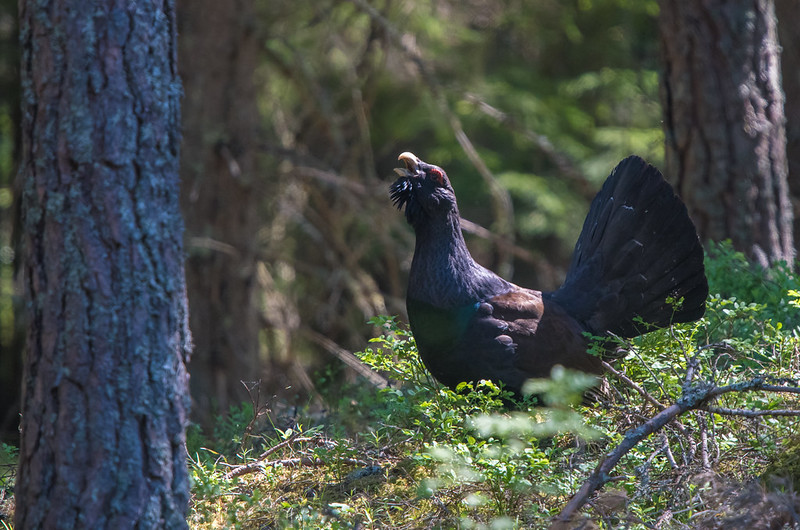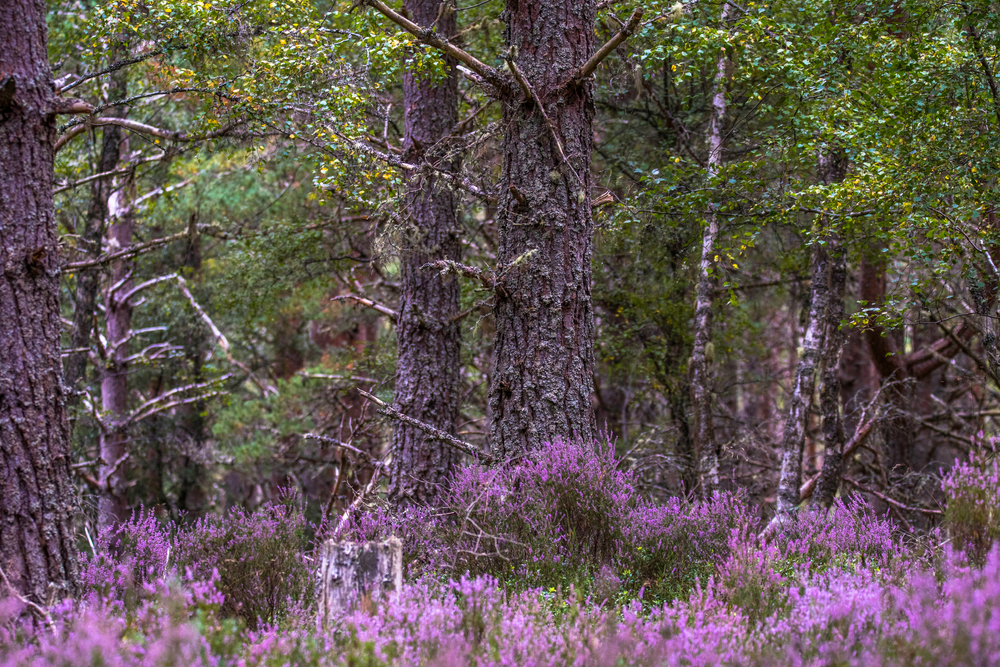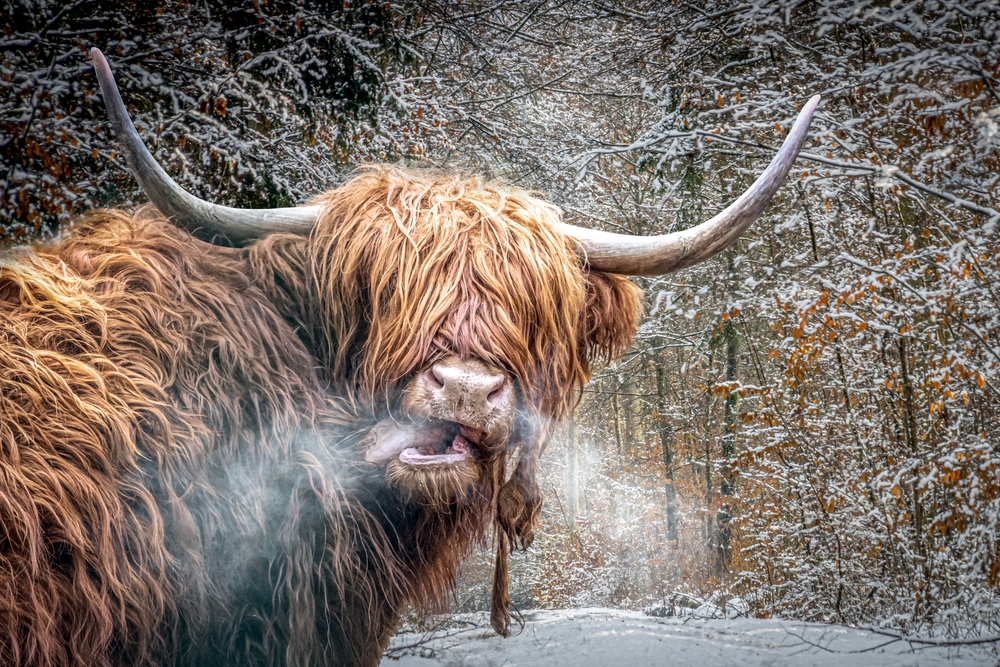
Roy Dennis is a senior and eminent wildlife conservationist with a lovely voice and plenty of things to say.
He once worked for the RSPB as Highland Officer and before that he was the director of the Fair Isle Bird Observatory.
For many, Roy is best known for his role in promoting reintroductions of mammals and birds, and for being a leading exponent of avian reintroductions.
In recent years he has produced several very thoughtful accounts of his work and his views on what is needed in nature conservation. See Cottongrass Summer, 2020; Restoring the Wild, 2021; Mistletoe Winter, 2021.
Think big – Act bigger
Capercaillies, cows and Caledonian pines have been my neighbours for sixty-five years. In that one lifetime, the number of capers in Scotland has fallen from 20,000 to less than 500 – it’s a disaster, but at least now the government has declared it an emergency. In much the same time, traditional cattle have declined, Highland cattle are much commoner, but too few live in the old woods. The pinewoods have seen many changes, mostly detrimental until the end of the last century, when planting and natural regeneration has seen encouraging positive changes.

I have heard people in authority say if the capercaillie is too difficult and too expensive to save, it may be better to accept that it will become extinct. That completely fails to recognise that the capercaillie is a key indicator of much larger ecological problems in the native pinewoods. If the caper is failing, so are most of the rest; for example, the woodcock, the song thrush, the tiger beetle, distinctive woodland plants and the whole panoply of invertebrates, fungi and ground micro-organisms. It’s catastrophic and it’s happening in the most designated nature conservation locations in our land. These wonderful forests have become dysfunctional and many of the new ones will go the same way.
There is a solution and it’s been talked about since the 1990s; to restore nature cattle to the native pinewoods to benefit capers and all biodiversity. For well over 99.9% of the capercaillie’s time on earth it lived in forests containing large mammals. Any talk of restoring the extinct predators – lynx, wolf and brown bear – to the UK sends the NFU into orbit, but the most important mammal for ecosystem health was the original wild ox or aurochs. Although extinct as a species, fortuitously its genes live on, and nowhere more noticeably than in a Highland cow.

The original aurochs benefited woodland grouse and myriad biodiversity in so many ways. Nature cattle grazing in those forests would now benefit capercaillies, especially the young broods with their mothers, by creating path networks for easy access to feeding sites, restoring a complex mix of ecotones, structural and vegetational diversity as well as invertebrate increases associated with non-chemically treated cattle dung.
Since the earliest eras of Planet Earth, large mammals have made pathways over the land – they are essential for moving quickly, often in a line, from one preferred site to the next, as well as providing speedy exit when predators arrive. The earliest humans, when they became bipedal, would have recognised that it was easiest to get from one place to another by walking along these amazing mammal pathways, especially wide ones made by elephants and other large mammals, often through long vegetation or thorny scrub woodlands.

These pathways became permanent features in the countryside and were used over many millennia; they were used by wildlife for daily journeys to drink water or graze, or to return to their favourite overnight sleeping areas. These well-used permanent tracks became important for the Neolithic arrivals and with progress the animal pathways finally became, in more recent eras, permanent tracks for horse and carts between villages, and then morphed into roads. It’s why many rural roads meander so much, for they are reflecting early animal idiosyncrasies. But all of them have one purpose and that was to get more easily from A to B. Without pathways, life becomes unconnected. Imagine how it would be for us if the road between our home and the local town were removed. That’s the scale of the problem for female capercaillies and their broods of young assailed by a widespread and impenetrable heather jungle in our dysfunctional woods.
It’s an interesting thought that the aurochs did not become truly extinct but just evolved into something smaller and different looking. But importantly Highland cattle, for example, are still the same large herbivore, grazing vegetation as it walks through the woodland, and with that marvellously adapted ‘stomach’ and the ability to cud just like their original ancestors. This suggests to me that Highland or Galloway cattle are better than any other traditional breed for restoring replicate aurochs’ presence in the ecological restoration of many nature sites. These cattle have often been used for biodiversity gain in marshes and grasslands, but, sadly, only in a few places in caper woods.
The cattle must be ‘nature cows’ of the highest value for enhancing and maintaining biodiversity in a damaged natural world. It may be difficult for agriculturalists to accept that the monetary value of cattle products, meat and milk etc, for human use could in the future have less monetary value and importance than the ecological value of nature cattle for ecosystem services for humans and the planet. Simply put – what is the monetary value of essential pollinators, earthworms recycling soil and those ecosystem engineers, when we know those ecological values are so crucial to the future of us and our planet?
I’ve heard it stated that the key action for capers is to prevent extinction but surely the over-riding vision must be to restore a viable population, of say at least 5000 full-grown birds at the start of each spring. This would suggest a rough requirement of at least 1000 to 1700 km² of ecologically healthy forest. Scotland has so much degraded open land that requires ecological restoration that this should just be a starting minimum, bearing mind only 4% of the original boreal forest remains. To fulfil this scenario, the requirement for nature cattle for ecosystem functioning must be outside food production and might be at least 25,000 truly semi-wild Highlanders living their whole lives in and around the forests as ecosystem engineers of the highest quality. That’s the scale of the task.
To save the capercaillie and its biodiverse neighbours in truly healthy Scots pine forests, we need urgent and big action. It’s too late to continue talking and handwringing – the caper, the cow and the Scots pine could be a perfect example to demonstrate how to truly restore other big healthy ecosystems on land and in the sea, here and worldwide.
[registration_form]
Brilliant blog, brilliant bloke. I really love the idea of thousands of Highland cattle living and dying in native woodlands – all that invertebrate friendly dung, birds plucking the hair to build nests with and ultimately a massive rotting carcass with all the ecological niches that will create – that hasn’t existed since the last of our real megafauna was killed off or converted to domestic stock thousands of years ago. If we cut our food waste and fed a larger proportion of what’s left to pigs how much would that do to compensate for the loss of meat production from marginal areas? I suspect it could actually surpass it, but apparently the NFU aren’t keen, why complicate things when you can just stick your hand out for a subsidy?
May be this article was about 1 bird but how many species have declined since 1975 when Ivermectin came on the market to remove internal worms. As Ian Newton points out this chemical lives for 147 days after coming out of the animal it has been placed in killing most insects that feed on dung. To start with, most waders have declined, most farm birds and any that may be found where domestic stock are found. So why? Food? Modern science only shows today’s food. What about before 1975? The RSPB have only just banned it on their farms even though some said ‘No’, the contracting farmers pumped it in before their stock entered the reserve!